Scandinavian style in the interior
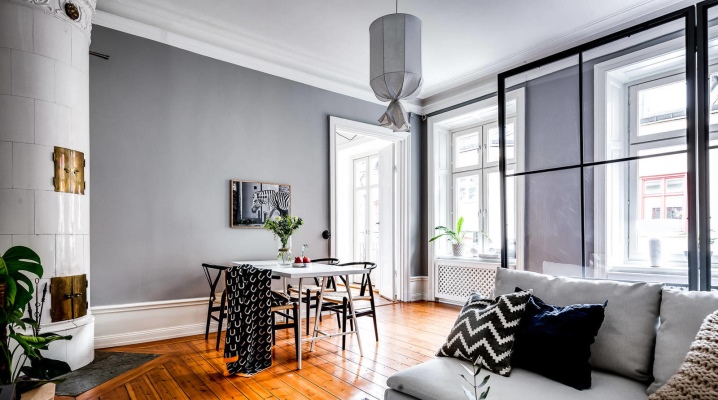
The Scandinavian trend in interior design has been at its peak of popularity for several decades. It is chosen for the fact that it looks stylish and fresh at all times. And although there is no universal recipe for creating a Nordic design, there are some typical solutions that can be found in all Scandinavian homes, without exception.
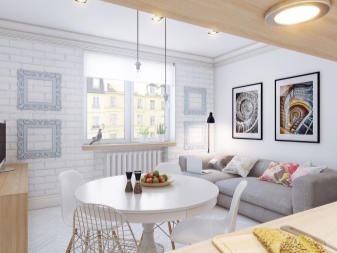
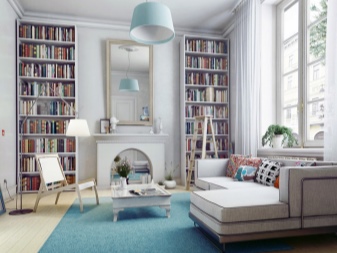
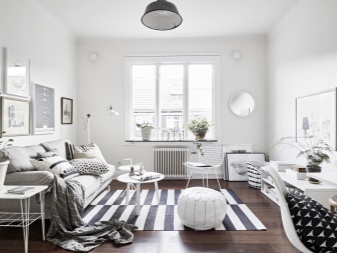
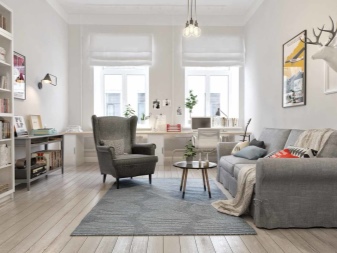
What it is?
It is believed that the emergence of the Scandinavian style in interior design took place in the middle of the 19th century. In fact, this happened much earlier. The history of Nordic design dates back to the 18th century, during the reign of King Gustav III. Until that moment, the inhabitants of Scandinavia have furnished their homes in accordance with the trends of France, England and Italy. That is why the features of Rococo, Classicism or rustic Provence prevailed in their houses. At the initiative of the ruler, who was famous as a trendsetter, light northern motives were introduced into the interiors. Until the early 30s of the last century, the Gustavian style was in vogue on the territory of the Scandinavian countries - and it is considered the predecessor of modern Scandi.
After the Second World War, the current received a new leap in development. During that period, designers tried to make the interior design more functional and restrained, giving it some modern features.
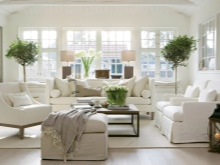
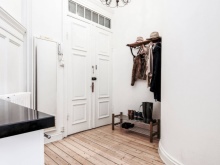
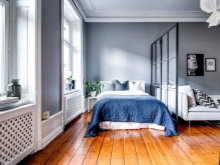
After the Scandinavian style was presented at an exhibition in America, it conquered the public in England and Europe.
Today, Nordic design remains in demand in Scandinavia - in Sweden, Denmark, Finland, Norway, as well as in Iceland. This direction is distinguished by the absence of ostentatious luxury; seeming simplicity and impeccable sense of style prevail here.
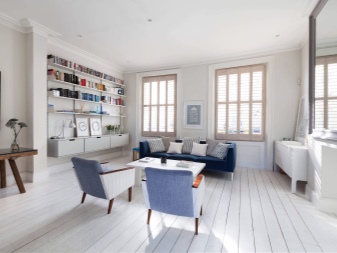
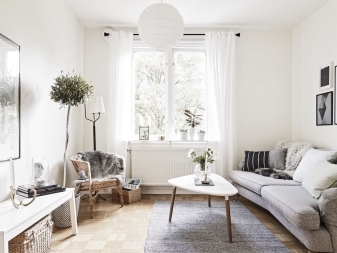
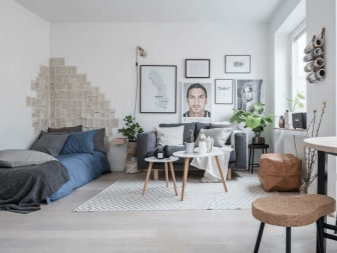
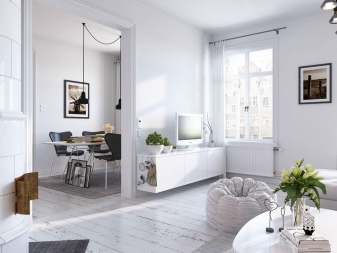
Protracted snowy winters have made their own adjustments to the arrangement of living quarters. It is no coincidence that milk color schemes prevail in scandi, as well as decorative elements with glass pendants. This design seems to emphasize that winter was and remains a favorite season for local residents, but at the same time their desire to enjoy warm days as long as possible is clearly noticeable.

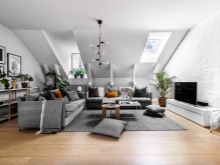
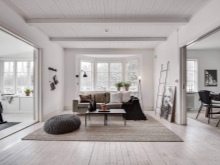
There are two types of Nordic interiors.
- The first one is more likely to gravitate towards the Swedish interiors of the 18th-19th centuries. This option is chosen by people who want to demonstrate their position, but at the same time avoid excessive pretentiousness and pomp.
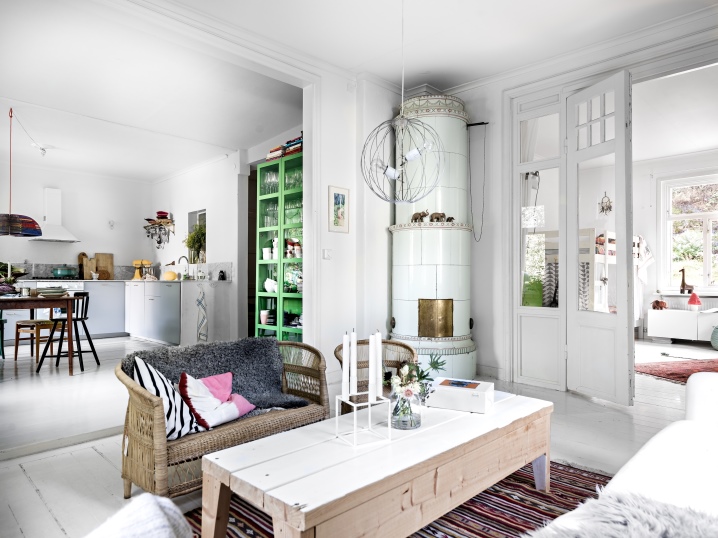
- The second is functionality combined with softness. There is no place for paintings in gilded frames and antique furniture. Everything in the interior embodies the idea of restraint and coldness. The main principle of this design trend is to make the owners of the house feel comfortable and the guests unenviable.

Features of the Scandinavian style combine a number of characteristics.
- Combining minimalism with ergonomics. There is absolutely nothing superfluous in scandi - there is a minimum of decor, and the furniture is only necessary. At the same time, the furnishings do not give the impression of being poor.
- Abundance of light. To make the room light, airy and create the feeling of being flooded with sunlight, the windows are made huge, complementing them with light draperies and transparent tulle.
- Simple furniture. Racks and shelves are widely used. The shape of the furniture is usually rectangular, slightly rounded corners are allowed.Scandinavian houses are furnished so that interior details occupy a minimum of free space.
- Light shade palette. Basic colors: white, silver or muted beige. Bright blotches are added as accents.
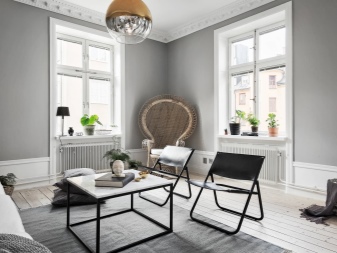
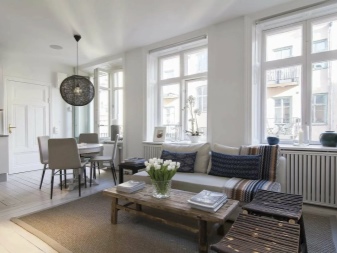
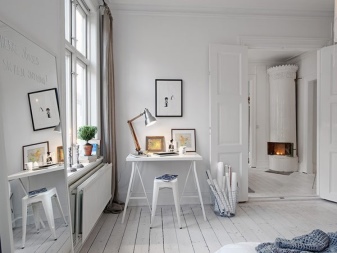
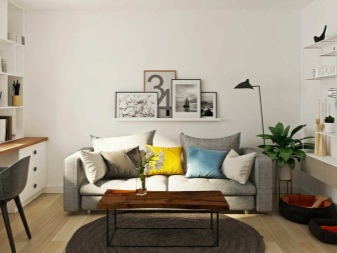
Nordic interior style is usually chosen by people of the northern type. And this does not apply to appearance, but to character traits and individual preferences.
Some people like the freshness of the north wind, the mystery of winter nature, they stick to cold shades, prefer a practical setting.
If you recognize yourself in this description, feel free to design your house in Scandinavian design. He will not seem cold to you - on the contrary, here you will always feel harmony, comfort and warmth.
You can implement the ideas of the Scandinavian direction both in a private house and in an ordinary apartment.
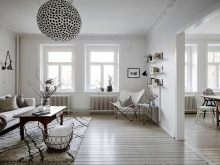
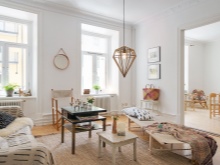
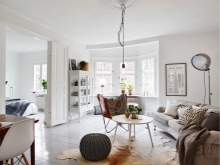
Finishes and materials
During renovations, when decorating Scandinavian interiors, you can use exclusively natural materials and textures, from wall decoration to the selection of decor elements. In such a design, there is no place for plastic, synthetics and acrylic, even metal with glass is used only in the design of parts. Only wood and stone are used in the cladding of walls, floors and ceilings (as a budget option, their high-quality imitation).
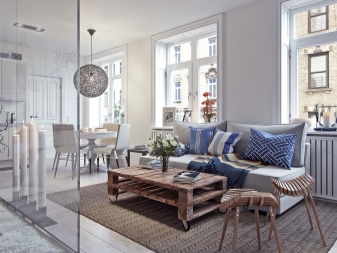
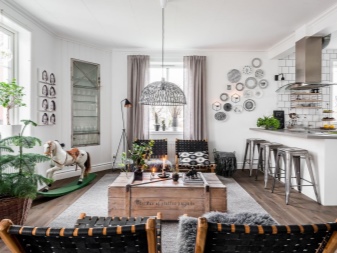
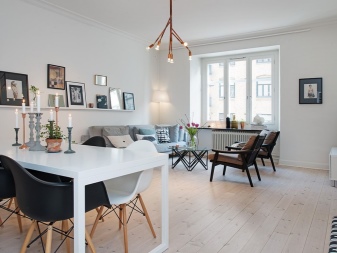
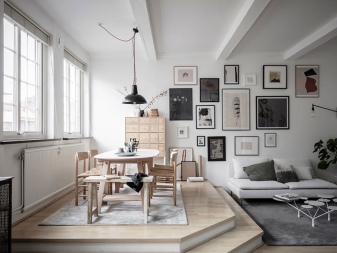
The floors are most often finished with a wide rough board, preferably untreated. If you still have old parquet flooring, you can restore the flooring, leaving a slight aging.
In the kitchen, hallway and shower room, more durable materials will be appropriate. Here, porcelain stoneware or ceramic floor tiles are suitable, less often natural or artificial stone is used. These are durable, practical options that fit perfectly into the Nordic style.
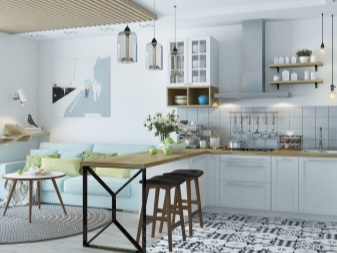
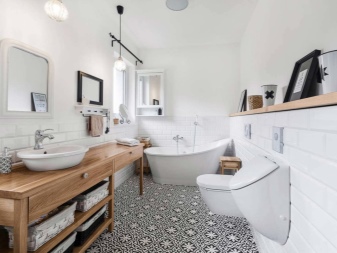
Wall decoration should be strictly monochromatic. Wallpaper is rarely used here. Most often, surfaces are covered with paint in a neutral white color, and to create stylish accents, some areas are highlighted with textured plaster. If the house has preserved masonry, you can leave this fragment unworked.
The ceilings in Scandinavian dwellings are usually whitewashed with wooden beams and skirting boards in dark contrasting colors.

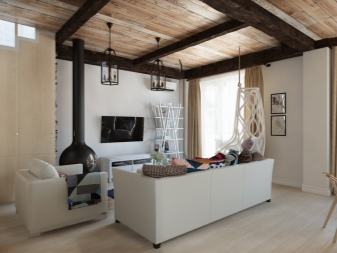
This solution is used mainly in cottages - they are technically inapplicable in apartments.
If ordinary painting is not to your liking, opt for satin stretch ceilings.
Interior doors must be installed wooden. They can be painted white or retain the natural texture of the wood.

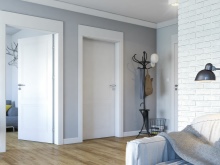
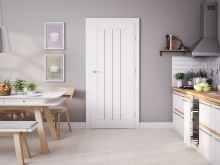
Selection of furniture
For the premises of the Scandinavian direction, laconicism and simplicity are characteristic, and the furniture also meets the basic requirements of the style. It has a simple geometry and minimalistic facades, while usually behind them is a multifunctional "filling" and an efficient storage system.
Complex transformers typical for high-tech are not used here. A light shelving unit with glass shelves and a classic cabinet with hinged doors look much more organic.
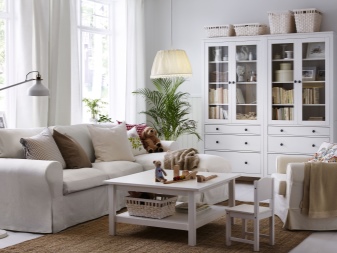
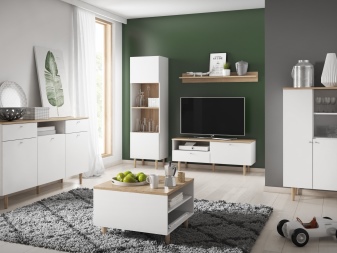
Upholstered furniture should be lightweight and simple, without bulky backs and bulky sides.
The favorite piece of furniture of Scandinavians is the armchair. They can be anything, but preference is usually given to comfortable classic models, which can be located in the living room, bedroom, or even in the hallway, if its area allows.
The Scandinavians are known as a reading nation, which is why a coffee table in a study or living room will become an indispensable element here. It serves not only for decoration - there are always books, magazines and newspapers on it. They can tell a lot about the hobbies of home owners.
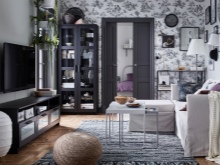

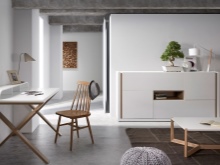
Color palette
The main color scheme of Scandinavian design is white, and this is no coincidence. This versatile shade brings together all the details of the interior into one stylistic composition. Light shades reflect the rays of the sun and seem to fill the rooms with light, which is so scarce in the northern territories. Semitones of gray can be an alternative to white. Depending on the selected shade, gray can make the room lighter, more sophisticated and calm, or, on the contrary, add an element of drama to it.
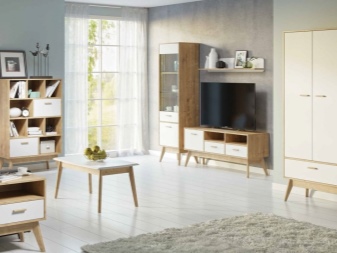
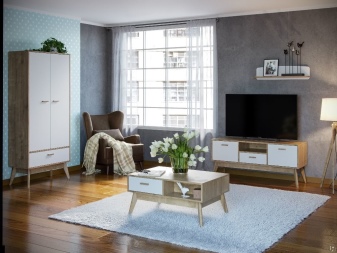
Contrasting black lines are allowed on a solid light background - they visually expand the space and correct its geometry.
But the accents should be bright. Designers agree that contrasts can be present in the room in the form of sconces, flowerpots, decorative shelves. Slightly muted colors are in trend: yellow, pink, turquoise and red.
And also green is often used in the interior. It reminds of the Scandinavians' love for wildlife. It can be seen absolutely everywhere - from flowers on the balcony to decorative elements and textiles.
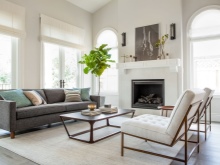
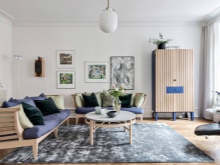

Decor and textiles
A Scandinavian home is unthinkable without textiles. In summer, these are throws and cushions that add a cozy atmosphere to your home. In the cold, animal skins are used - they cover soft sofas, decorate banquets, chairs, and even put them on window sills. Their fleecy texture slightly softens the restrained design, fills it with a feeling of warmth.
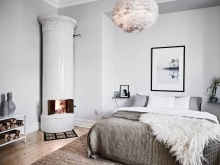
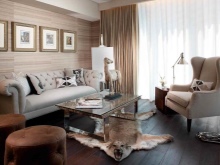
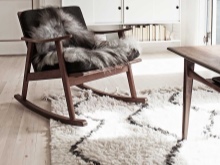
An indispensable element of a Scandinavian-style home is a soft carpet, usually with a long pile. It can be plain or have a light contrasting print. Such an element is appropriate in any season, it will never go out of fashion - you can paint the walls or change the furniture, but the carpet will be relevant, regardless of fashion trends.
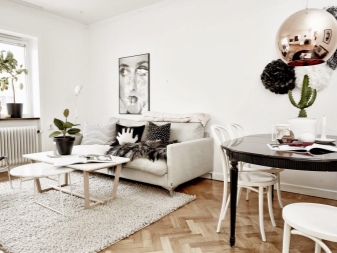
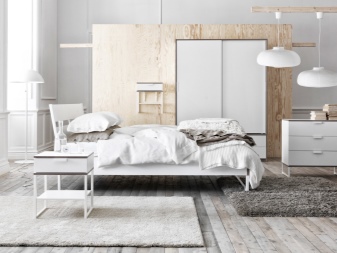
Scandi requires naturalness, so flax, cotton and jute are used here. Mixed cloths are allowed in the bathroom and in the kitchen - they are more resistant to wear and tear and are easy to clean.
Unlike other minimalist trends, Scandinavian rooms allow decorative elements. There is always a place for homemade candles, sewn toys and hand-tied flowerpots. Laconic posters and posters in white frames, panels, stickers, paintings and collages from black and white photographs are very popular. On the shelves of the shelves there is always a place for decorative compositions of stone, moss, twigs and dead wood.
As for the curtains, dense curtains are not used here. Here, roller shutters with a blackout lining are more appropriate.
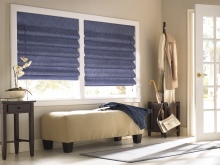
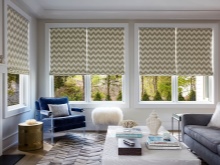

Lighting
Lighting in the interior of scandi is only multi-level and at the same time diverse. The diffused overhead light is represented by a series of pendant or spotlights. Central chandeliers are almost never used, as they give uneven lighting.
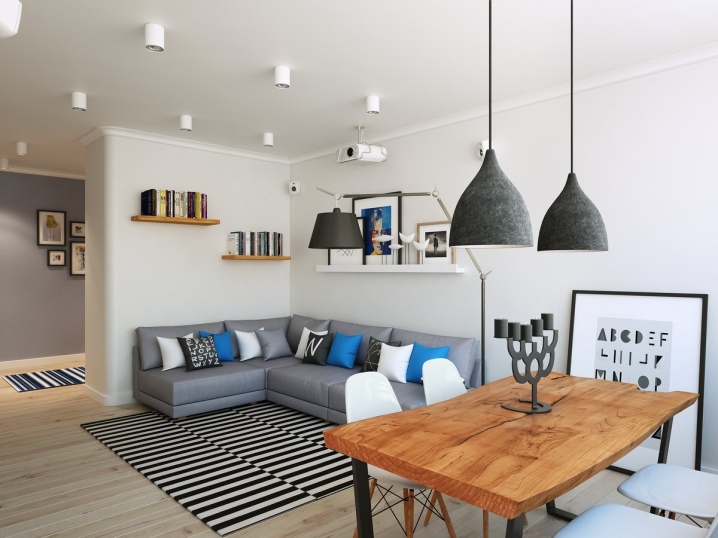
All functional areas are equipped with bedside lamps, floor lamps, wall sconces and table lamps. The highlighting of niches, shelves and other decorative elements looks relevant, but the temperature of the LED strip should be cold.
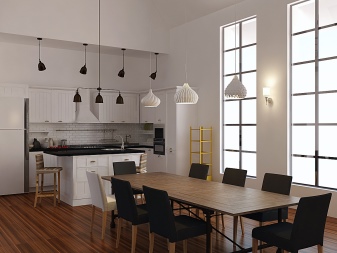
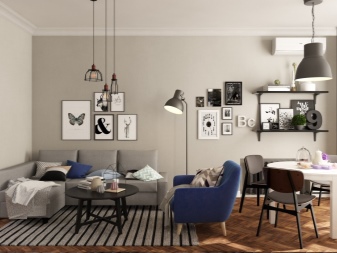
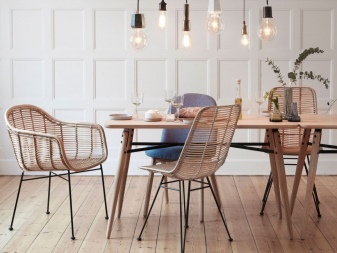
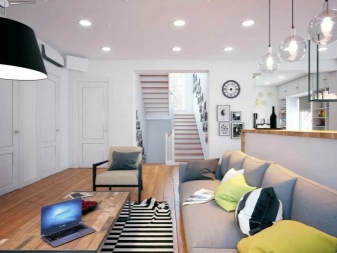
As an alternative to futuristic neon, you can hang cozy garland balls.
Decoration of different rooms
Consider typical design projects for the implementation of Scandinavian design in various rooms.

Kitchens
The Nordic design of the kitchen block should embody freedom, practicality and laconic nobility.
- The walls, especially in the cooking area, are tiled with white tiles.
- In the functional dining area, it is allowed to cover it with light decorative plaster.
- The floor is made of stone, laminate or wood-colored tiles or cold light gray tones.
- Light-colored constructions are used for furnishing.
- The dining table is selected with a wooden tabletop, chairs, preferably without backs and carved legs. A good solution would be milky linen tablecloths.
- Lighting in the form of ceiling sconces with glass shades will complement the overall impression. And a teapot, which should also be in the Scandi style.

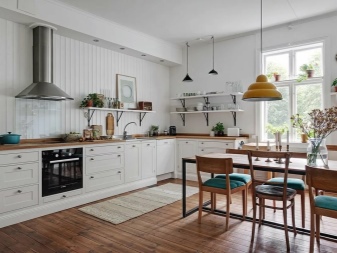
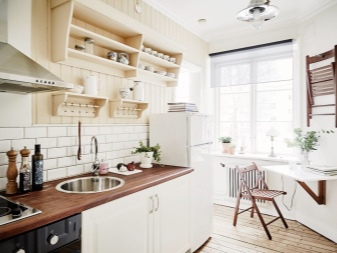
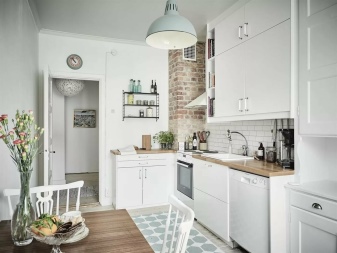
Living room
If you correctly arrange a living room in a Scandinavian design, then it will invariably breathe calmness and regularity of the northern lands. To arrange a common room, you should choose the most spacious room with large windows overlooking the sunny side.
- The walls are covered with textured plaster. The ceiling is also made snow-white - this is the main color of the style, it perfectly reveals the atmosphere of the Nordic decor.
- Lay parquet or laminate on the floor. The color scheme can be cool gray or with a warmer shade of wood.
- In the living room, zoning is certainly performed. In it, it is imperative to equip a resting place with a high glass table.
- Furniture should be unpretentious, without bulky decor, catchy patterns and massive elements. Several pillows should be placed on the sofa - they will become a stylish accent, a bright splash in the overall restrained decor.
- The living room design is complemented by a fireplace. The fireplace area is laid out with white bricks, and the foot with dark brown stone.


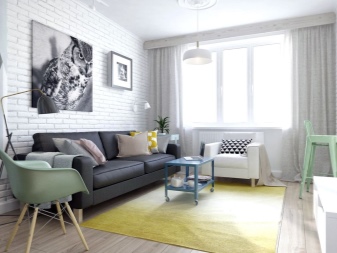
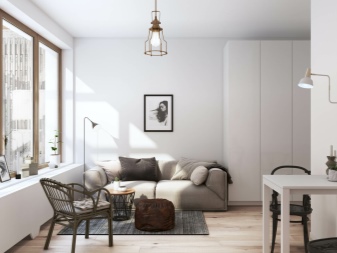
Bedrooms
The bedroom should evoke a sense of peace, so here you need to create an environment that will allow you to immerse yourself in a full sleep.
- The wall at the head of the bed is sheathed with wood. All other surfaces are finished with textured plaster of a light nude shade.
- Paint the ceiling white.
- In the bed area, be sure to lay a carpet with a long pile or a white animal skin.
- On the sides of the bed, you need to put a pair of laconic pedestals with small frosted glass lamps.
- Textiles in a Nordic bedroom should be slightly pinkish or creamy.
- The use of a large crystal chandelier is allowed. Alternatively, you can install a floor lamp with a light shade.
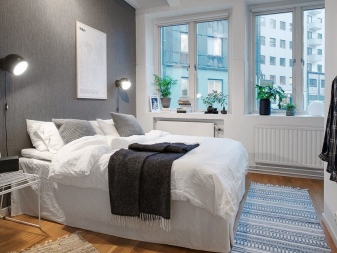
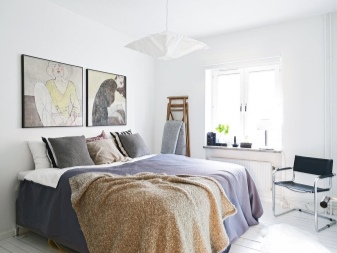
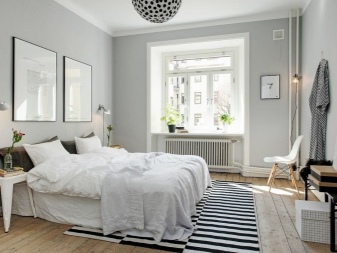

Hallway
The entrance hall is the first thing that the guest sees when he enters the house. Therefore, it should be furnished with particular scrupulousness. At first glance, they should evoke associations with thoughtfulness and ergonomics. The front door should be made of wood, the shade of the varnish should be as close as possible to the natural colors.
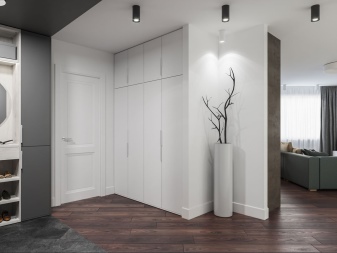
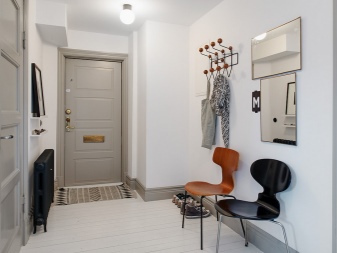
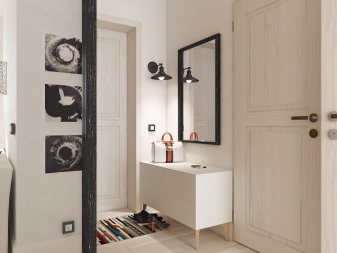
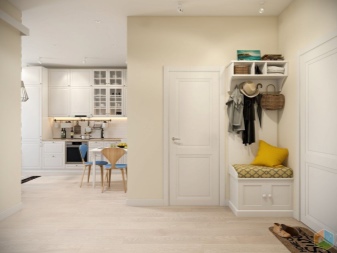
The finish is made of practical materials that can be easily cleaned. Vertical surfaces and stair railings can be painted in cream.
White in the hallway is not practical enough, because due to frequent pollution, it quickly loses its purity of shade. The lower part is usually trimmed with panels.
The floor should be slightly darker than the walls, it is optimal to lay a stone of cold colors.
Furniture should only be necessary: a chest of drawers, a wall hanger and a mirror. In the area under the stairs, you can equip a wardrobe with double walls.

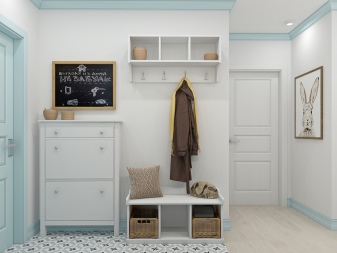
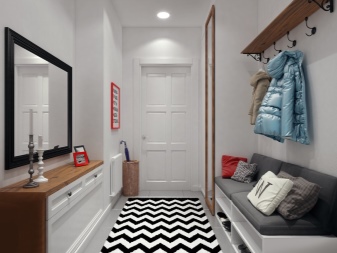
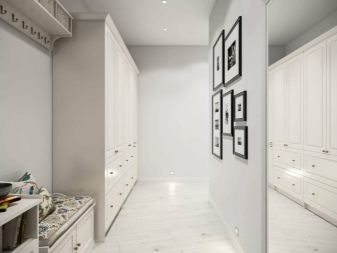
Bathroom
A Scandi-style bathroom should symbolize the purity and frosty freshness of Northern European nature. Therefore, combinations of white and sea tones should prevail in its interior.
For example, the design looks spectacular when three walls are white and one is blue.
An inexpensive curtain with an underwater print can become a stylish accent.

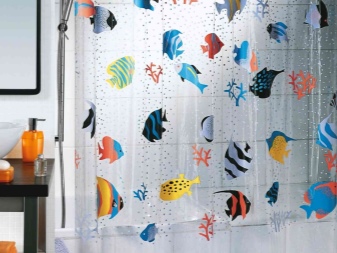


Stylish examples in the interior
When arranging Scandinavian interiors, you should think over everything, down to the smallest detail, taking into account the basic wishes of the household. Only in this case, the Nordic design will be for you not just a stylish setting, but the basis of a cozy home in which you want to spend time with your loved ones:
- most often the Scandinavian style is decorated in cottages;
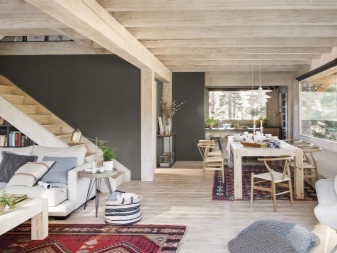
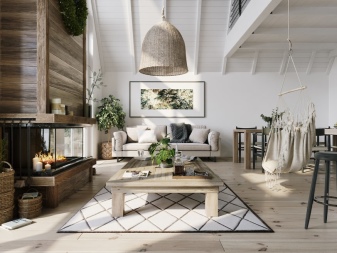

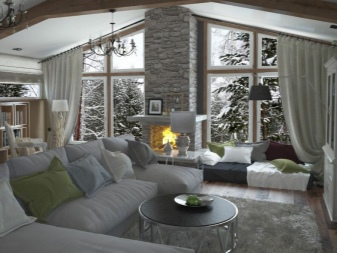
- but it can be successfully implemented in a small one-room apartment, even in a small "Khrushchev";
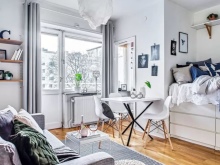
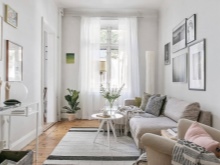
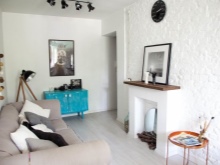
- the dacha looks good, decorated in a Scandinavian style;
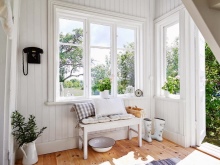
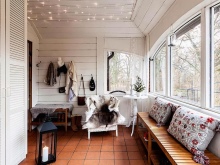
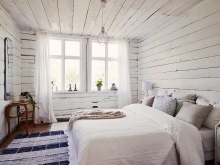
- this style is suitable for both a girl and a man;
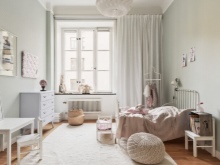
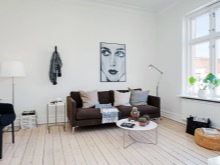
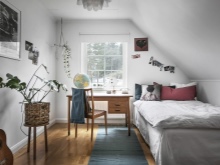
- and a few more real examples of the design of houses and apartments in the Nordic style.
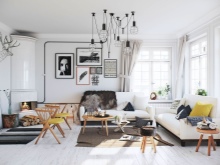
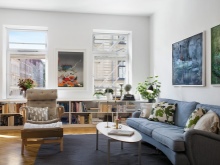

For the Scandinavian style in the interior, see below.













The comment was sent successfully.